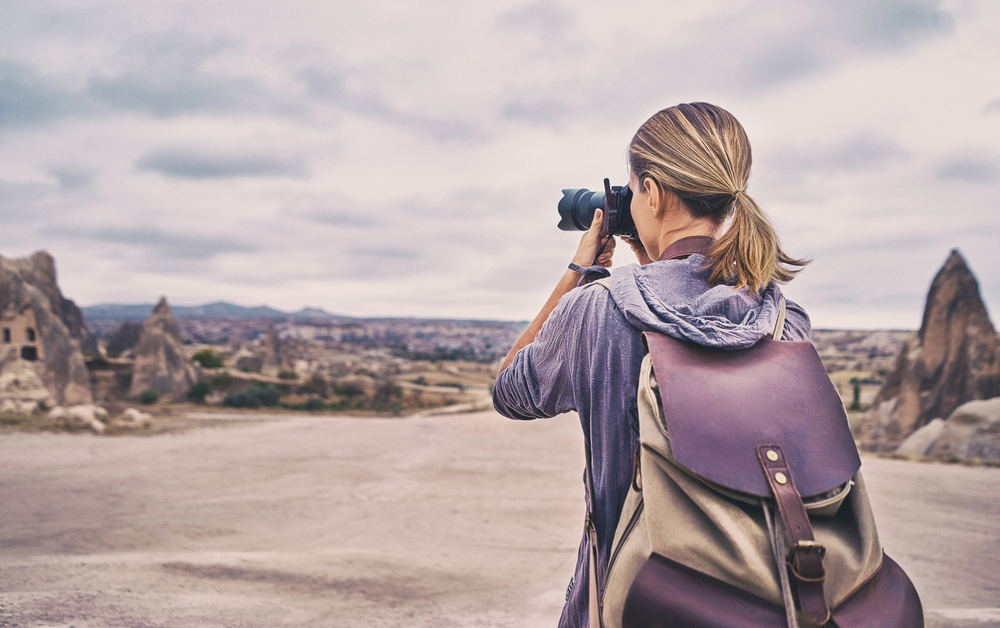Whether you’re planning a trip to the serene hills or to beautiful beaches, your itinerary must include taking care of your skin and hair while travelling. Here are some skincare and hair care tips when travelling.
Holiday = travel = fun times! Whether the distance is short or long or the destination is hills or beach or just an adventure trek, travelling is always exciting. Travelling, even if it is for work sometimes, is a beautiful experience. But if you become very laidback about your hair and skin care during travel, you may end up spoiling it!
The new location, new climate, disrupted eating routines and the stress of travel can impact the skin and hair negatively. It could result in dull hair days, breakouts, acne flare ups, dry lips, tan lines and more problems. However, you need not worry because skin and hair during travelling are not a tough task.
Hair care and skin care tips for travelling
Here are some tips to make sure your skin and hair remain healthy during your sojourns.
1. Research the weather
When going to a new place, don’t guess about the weather and climate. Read about it and make a note of it. Your choice of moisturiser, face wash, shampoo and sunscreen and even the makeup that you will carry depends on whether the weather is cold, rainy or dry. For example, you would require a pore cleansing and hydrating skincare in humid weather whereas you would require creamy moisturiser in cold weather.
2. Follow your regular skincare routine in holidays too
Skin and hair cells never go on a break and therefore there should be no break in your skincare routine too. A consistent routine is the key to happy hair and skin days. Carry your regular skin care products in travel-size bottles to avoid spilling and baggage weight.
3. Essentials are all you need
You don’t need to bring your dresser everywhere you go. Carry key ingredients that you use in your normal routine as well like cleanser, toner, moisturiser, night cream and sunscreen. Also, don’t forget to carry disposable makeup wipes to remove the makeup.
4. Keep the moisturiser in your purse
Hydrate your skin with a moisturiser before you board the flight or before driving with the air conditioner. Keep reapplying it to keep the skin hydrated. You can even carry some hydrating sheet masks for a quick skin revival. Products with rich hyaluronic acid and vitamin C content should be your preferred choice.
5. Carry a toner
Toner is good to mattify greasy skin and re-energising travel skin. However, if you don’t have a toner, use a blotting paper. It will help soak the oil right up and prevent dirt build-up. They also work well on sensitive skin.
6. Stay hydrated
Make sure you have a water bottle with you at all times. Keep sipping water at regular intervals. Many people avoid drinking water when travelling but this is not a good idea. Lack of water can affect your skin and hair in a bad way. Not drinking water robs the skin of its radiance and the hair of its shine. Always drink water.
7. There is no way around sunscreen
You can leave everything at home, but not the sunscreen. You need to apply it before you step out of the house and keep reapplying every 3-4 hours. Yes, even on your flight and in the taxi! Sunscreen helps in preventing tanning, skin damage, pigmentation and premature ageing. Use a gel-based sunscreen during summers and cream based one in cold weather. Use an SPF of more than 30.
8. Cover your hair with a scarf or hat
Protect your hair from dirt and pollution and the harsh sun by covering it. This also prevents scalp ageing and makes sure your hair stays younger and darker longer.
9. Keep the hair tied up
We know it is tempting to let the hair flow in the wind and get those celebrity-like selfies and photos but they are may not be doing good for your hair. Continuous exposure to heavy wind can damage your hair. The wind carries with it dirt and particles that cause greasy scalp, clogged pores and tangled hair that become prone to breakage. Keep the hair tied into a bun or a braid to prevent hair damage.
10. Keep the makeup basic
Too much makeup runs a risk of running down and dirt gets stuck in it. Also, if you are not able to remove it, it can cause breakouts, skin pigmentation, dry skin and even fine lines. You don’t want that. So, keep the makeup to the bare minimum.
11. Avoid using hotel toiletries
Your skin is unique and needs specific products and unknown toiletries are not going to help your skin and hair. They are not often the top quality and are made for general use. Your skin or the scalp can react to the product adversely. Hence, don’t use these products unless necessary. Or read the ingredients carefully before use.
Travelling should be fun and not spent worrying about skin and hair. Follow the given tips, and you won’t have to worry about anything. Keep good skin and hair products handy and customised for travelling.



